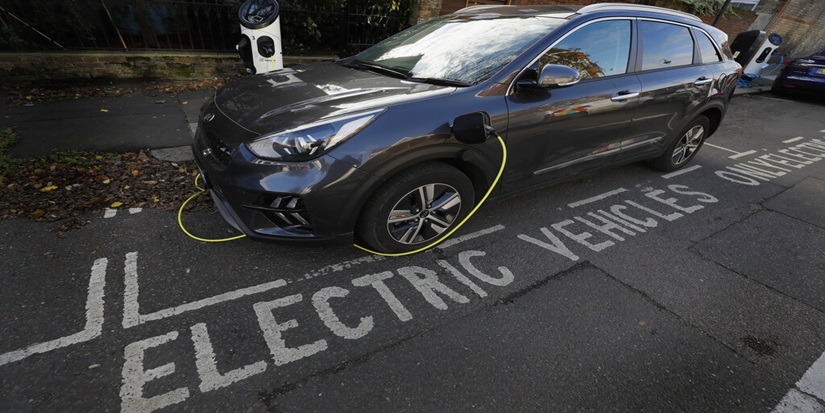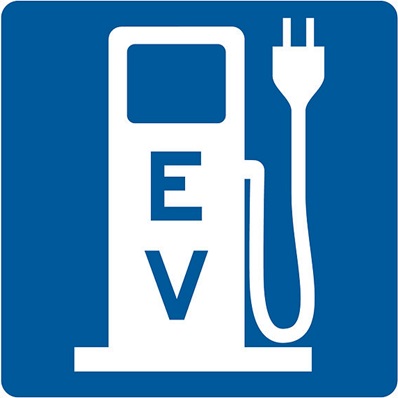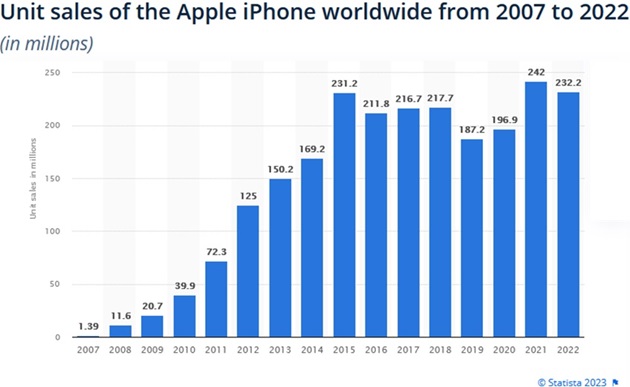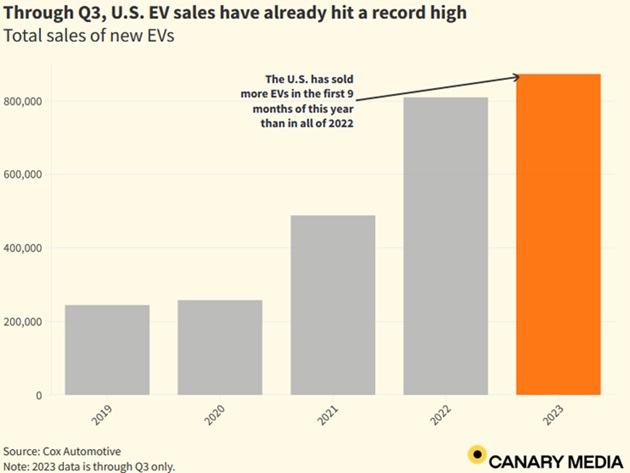
EVs and iPhones
-
 Patrick Watson
Patrick Watson
- |
- November 21, 2023
- |
- Comments
Remember life before smartphones? It wasn’t that long ago. Apple launched the first iPhone in 2007. Within a few years, they were everywhere. Soon other companies made similar devices.
Now? Most people can’t imagine going without them.
Usually, change is incremental. People find ways to make existing products better or less expensive. The iPhone wasn’t just a better phone; it was something entirely new.
These big paradigm shifts are rare. Often it takes a few years to realize how important they are. Another one is unfolding right now… but not for the reasons you may think.

Source: Wikimedia Commons
Batteries on Wheels
Tech company marketing executives love “early adopters.” Those are the people who like buying the newest gadgets, despite knowing prices will probably fall.
I’m one of those people. So is my wife Grace – though she sometimes likes different gadgets.
For example, in 2017 I had no interest in electric vehicles. Grace, however, had seen a Tesla and quickly decided it was awesome.
Like what you're reading?
Get this free newsletter in your inbox regularly on Tuesdays! Read our privacy policy here.
I was still skeptical when we went to a Tesla test-drive event. After driving one, I had to admit she was right: The cars were awesome. But they were also way above our price range.
Undeterred, Grace set about looking for bargains, and eventually found one. A Ford dealer near us had taken an older Tesla as a trade-in. They knew nothing about EVs and had priced it low. Done deal—we bought it and loved it. A few years later we got another one.
Now here’s the weird part. We didn’t buy EVs to save fuel costs, nor were we trying to save the planet. We just liked the cars. They were fun to drive.
I did see a financial advantage, though.
EVs are mechanically much simpler. No transmission, radiator, catalytic converter, or fuel injectors. Essentially, it’s just a big battery with some electric motors to turn the wheels.
I figured with fewer moving parts, EVs would last longer and have lower lifetime maintenance costs. And that’s proved correct, at least for us.
Falling Barriers
Back to iPhones. As revolutionary as they were, they still didn’t take off instantly. This chart shows the number sold by year.

Source: Statista
You can see sales needed a few years to really take off. Smartphones were a novelty for a long time. The previous leader, Blackberry, kept growing its own sales until late 2011.
What took so long if iPhones were clearly so superior? The Great Recession didn’t help. But maybe more important, corporate adoption was slow because they lacked the Blackberry’s security features. Only when that changed did sales really take off.
Electric vehicles have a big barrier, too: “Range anxiety.” No one wants to be stuck with an empty battery or sit around for hours waiting to charge. This has to improve before sales can really grow, no matter how great the vehicles are.
Like what you're reading?
Get this free newsletter in your inbox regularly on Tuesdays! Read our privacy policy here.
I think that point may be near. Tesla is opening its supercharger network to other brands (which I’m sure are paying a high price for access) while other charging networks are expanding, too.
2010 Again
EVs are like gasoline cars in one key respect: They are large, heavy, and mostly metallic. These metals don’t grow on trees, particularly the battery components. Supplies are limited.
It’s not just the cars, either. The electrical grid infrastructure needed to support mass EV usage needs to grow, too. Another tall order.
Many smart people are working to solve these problems. A lot of innovation is happening in battery technology, for instance. But it’s taking time, and meanwhile EV growth is limited by the number of vehicles the companies can build.
That number, while pretty big, is still far short of what’s needed to significantly reduce the carbon emissions which are the main reason governments are encouraging EV sales.
I noted above we didn’t buy our EVs to save the planet. EVs do help fight climate change, which is important and getting more so, but that’s not the economic attraction.
EV sales are starting to take off because people who try them see a compelling value vs. the alternatives. The growth chart looks a lot like the first five years of iPhone sales:

Source: Canary Media
Market share is growing, too. EVs are now about 8% of new car sales in the US, up from 5% in 2021. Still low… but accelerating.
At the recent Electrify Expo auto show in Austin, I drove models from Ford, Porsche, and Vietnamese automaker Vinfast. All were impressive in their own ways. The electric Porsche Taycan was fast and luxurious, the Vinfast comfortable and economical.
The F-150 Lightning truck? It’s, well, a truck. It can haul a heavy load and even power your house during a blackout. And charging it costs a lot less than filling a giant gas tank.
Like what you're reading?
Get this free newsletter in your inbox regularly on Tuesdays! Read our privacy policy here.
One more thing…
Electric vehicles aren’t just easier to maintain; they are easier to build. That’s why new brands like Vinfast are popping up. Not all will succeed, but the competition will lead to better products and lower prices.
I think EVs are about where smartphones were in 2010: The big growth is still coming. Best to start paying attention.
See you at the top,

Patrick Watson
@PatrickW
P.S. If you like my letters, you’ll love reading Over My Shoulder with serious economic analysis from my global network, at a surprisingly affordable price. Click here to learn more.

 Patrick Watson
Patrick Watson
